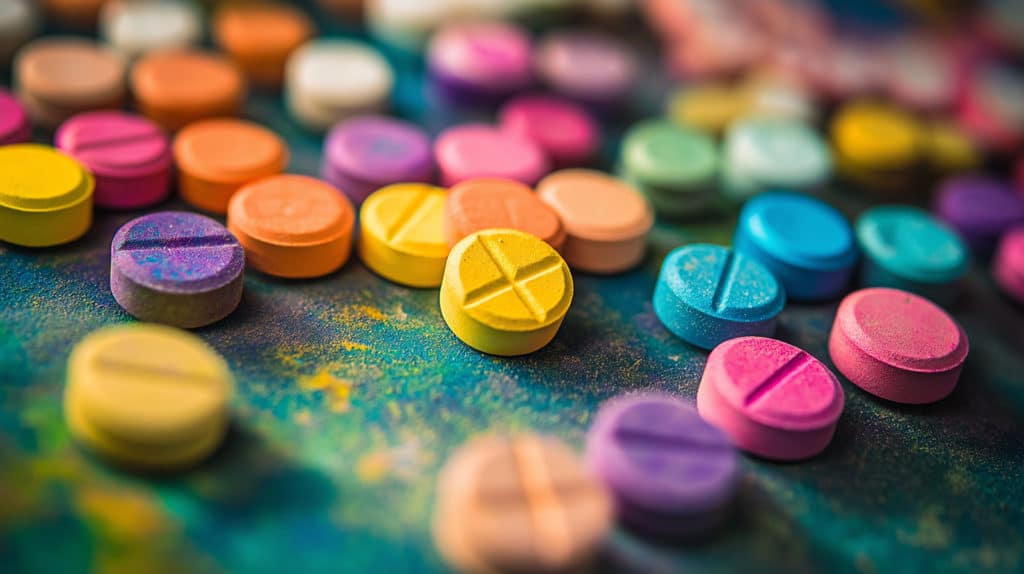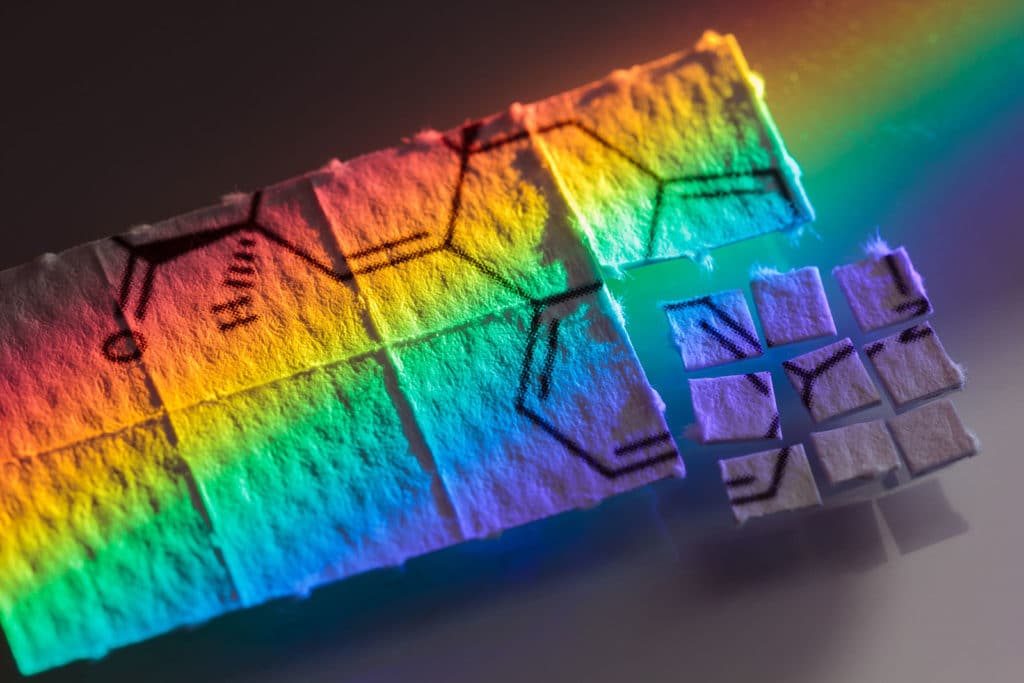From lighting up the night at raves to allowing people a self-medicated escape from everyday life, drug use is far from uncommon. While some studies suggest there are beneficial effects from microdosing psychedelics like LSD (also known as “acid” and “Lucy”), procedures like that need to be overseen by medical professionals, which isn’t the case for recreational drug use. As you might guess, unregulated drug use can be quite hazardous to your health.
In search of more intense highs and more varied experience, some drug users like to combine drugs. The practice of mixing LSD with MDMA (also known as “molly,” “X,” and “ecstasy”), known as “candy flipping,” has been around since the 1980s, partially the result of MDMA becoming more easily accessible. Taking LSD and MDMA at the same time appears to increase MDMA’s effects while also lowering the chances of overdose. However, combining drugs without pharmaceutical oversight can lead to a whole host of issues ranging from mental health difficulties to, at worst, death.
Illinois Recovery Center is here to help. Take advantage of our free online resources or come in for face-to-face help. Either way, we want to help you stay aware of the potential impact of drugs on your body. Below, we’ll go over the effects of LSD and MDMA, as well as the way they interact with each other and the brain.
Table of Contents
The Effects of MDMA and LSD

MDMA
A lab-made drug, MDMA functions as a stimulant within your system. Some sources also consider it to be a psychedelic drug because of the way it can interact with vision and your perception of time. It causes an increase in serotonin, norepinephrine, dopamine, and other neurotransmitters that are responsible for mood, sleep, memory, learning, and more.
Though it’s primarily used recreationally, emerging research suggests that MDMA can be used in the treatment of mental health conditions such as PTSD (post-traumatic stress disorder).
Some of the primary effects of MDMA include:
- Increased feelings of happiness, even euphoria
- Extra energy
- Increased emotional intimacy
- More sensitivity to stimuli (touch, smells, etc.)
However, MDMA is also associated with a host of side effects. Some of the most common side effects of MDMA include:
- Higher blood pressure and body temperature
- Emotional crashes
- Anxiety (which may persist between doses with chronic use)
- Heart or liver damage
LSD
Like MDMA, LSD is a synthesized drug—that is, it’s lab-made. It also, in some capacities, may be used to treat mental health conditions. The two drugs have their differences, though; for example, LSD is undoubtedly a hallucinogen. It disrupts communication between the various regions of your brain, leading to a feeling of connectedness with others along with auditory and visual hallucinations.
Some effects of LSD include:
- Long-lasting hallucinogenic trips that produce strong emotions
- Sometimes reliving vivid memories
- Increased emotional intimacy, as with MDMA
These are some of the primary reasons users may turn to LSD and other psychedelics. However, it isn’t without its own drawbacks, such as:
- Potential intense negative emotions, including increased anxiety
- Impaired judgement
- Confusion and paranoia
- Psychotic episodes

What Happens When You Candy Flip?
As mentioned above, MDMA triggers the release of neurotransmitters heavily involved with memory, mood, and other brain functions. LSD, on the other hand, stimulates the receptors in your brain that receive serotonin. When you candy flip, LSD opens up those receptors, allowing them to take in more serotonin released by MDMA.
Essentially, the thought is that the two drugs interact with each other in the brain. The stimulant effects of MDMA amplify the feelings of connectedness that LSD offers. Since MDMA already can result in increased happiness during a trip, the addition of LSD stacks with it, in addition to the touch sensitivity associated with MDMA. The stimulants within MDMA may also increase the duration a user feels the drugs’ effects, as well as increase their intensity.
We know that some mental health challenges, such as generalized anxiety, depression, and ADHD, can partially be caused by dysregulation in neurotransmitters and their receptors. That’s why some of the most common behavioral health medications are SSRIs, or selective serotonin reuptake inhibitors: they help regulate the brain’s intake of serotonin.
Triggering a flood of neurotransmitters results in the elevated moods associated with LSD, MDMA, and candyflipping. However, that increase can come at a cost, including overstimulation and neurotransmitter depletion. Both have an immediate impact on mental health, but they also can pose larger problems in the long term.
Risks and Dangers of Candy Flipping
Mental Health Risks
- Increased anxiety, depression, and similar symptoms
- Higher likelihood of psychosis
- Can trigger underlying mental health conditions
- May overstimulate serotonin receptors
On its own, MDMA usage can lead to confusion, paranoia, anxiety, and other mental health challenges. Using MDMA over the long term can even change the way your brain creates and receives neurotransmitters. The excess serotonin (along with other compounds) can actually damage the neurons within your brain, making it harder to regulate mood. The disruption to your brain—specifically, the hippocampus—can also mess with your ability to retain information, both when it comes to learning concepts and to your overall memory.
Physical Risks
- Dehydration and overheating
- Heart complications and serotonin syndrome (excess serotonin causing wide-ranging symptoms)
- Severe comedown effects, including exhaustion and emotional instability
In the immediate sense, candy flipping can cause dehydration, which then leads to you overheating. Coming down can be similar to an intense hangover, leaving you exhausted and emotionally unstable—individuals predisposed to mental health issues may even find those issues triggered.

Most importantly, though, not everyone can handle the flood of serotonin you get from candy flipping, which leads to serotonin syndrome. Symptoms range from mild, like nausea or diarrhea, to as severe as seizures.
Addiction Potential
- Developing psychological dependence on the euphoria from MDMA
- Increased tolerance
- Increased likelihood of polysubstance abuse
Though LSD isn’t considered addictive in the traditional sense, users may come to rely on the sensations it brings. MDMA, on the other hand, is classified as a drug with high addiction risk. If you’re concerned you may be abusing drugs or other substances, seek professional help from an addiction center like Illinois Recovery Center.
The Comedown from Candy Flipping
Many of the risks above contribute to the comedown you may feel as the sensations MDMA and LSD provide fade away. As the brain struggles to make up for the sudden deficit in serotonin, you may experience extreme fatigue and low moods, including anxiety, irritability, and emotional instability. These can make it hard to concentrate or get motivated.
The effects of a candy flipping comedown can fade within 24 hours. However, this varies widely from person to person, and some may take as long as a week to feel better. As a result, it can be difficult to work or study, as well as interact with loved ones.
When you’re emotionally vulnerable during a comedown, it’s important to do everything you can to support your mental health to help steady your mood. For some, it’s a self-care routine and contact with loved ones, but others may want to reach out to a recovery center for guided assistance.
Treatment for Candy Flipping and Substance Use Disorders
The potential impact of MDMA and LSD makes it crucial to seek help if you struggle with their use. At Illinois Recovery Center, we provide a range of treatment modalities to help you recover and bolster your mental health. Some of the treatment options we offer include:
- Detox programs, which help you manage withdrawal symptoms safely
- Psychotherapy, which addresses the underlying reasons for substance abuse
- Behavioral health support, such as counseling and support for co-occurring mental health disorders
- Medication management, which helps manage drugs’ long-term effects on neurotransmitters
Preventing Substance Abuse and Relapse
Illinois Recovery Center equips you with the tools to prevent substance abuse and relapse. We provide education on the risks of polysubstance use, including dangerous drug combinations like “candy flipping,” offer compassionate harm reduction strategies, and help you build a support network. Recovery is more sustainable when you know you aren’t alone. Understanding the synergistic effects of combining different psychoactive substances is crucial for preventing adverse reactions.

When to Seek Help
If you’re using drugs more frequently, self-reflection is important. It’s not just about increasing tolerance; you may find it difficult to cope without the drug, even reducing activities you typically enjoy. Drug use can alter behavior, leading to risky activities or desperate measures to obtain more. This can be especially true with substances known to cause cravings or mood swings.
Illinois Recovery Center provides person-centric, compassionate care. Through individual therapy, a range of inpatient and outpatient programs, and aftercare initiatives, we offer comprehensive support for those struggling with the use of psychedelic substances like lysergic acid diethylamide (LSD), 3,4-methylenedioxymethamphetamine (MDMA), and DMT. If you’re concerned about your behavior, reach out to us for a personalized treatment plan.
You Aren’t Alone
Candy flipping, the combination of LSD and MDMA, doesn’t simply lead to a next-day hangover; it can have lasting after-effects, especially with long-term use. The candy flipping experience can be unpredictable, with the effects of candy flipping ranging from enhanced sensory experiences to a bad trip. This combination of LSD, a hallucinogenic drug, and MDMA, an empathogenic substance, can produce a distorted sense of time, altered sensory perception, and unpredictable changes in heart rate and well-being. The hallucinogenic effects of LSD, including visual and auditory hallucinations, can be intensified by MDMA. The use of LSD, particularly in combination with other drugs, carries the risk of a bad trip, characterized by anxiety, panic attacks, and paranoia. It is important to remember that LSD is a synthetic drug derived from ergot, and its effects can vary greatly depending on the dose, setting, and individual. Long-term use of such drug combinations can also have negative impacts on mental health.
If you are experiencing a bad trip or negative after-effects, it is vital to seek healthcare assistance. Those effects can make it harder to stop using on your own, emphasizing the importance of seeking help. At Illinois Recovery Center, we care and strive to provide the best addiction treatment and mental health support.
Contact us today for the help you deserve, including immediate assistance. We offer support for individuals struggling with various psychoactive substances, including opioids.



